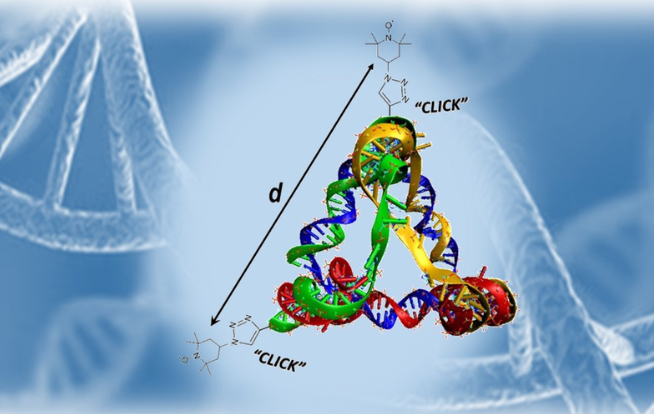Nanotechnologies based on the assembly of DNA - Deoxyribonucleic Acid - of biological or synthetic origin, are increasingly used in the fields of biotechnology, nanomedicine, nanophotonics and nanoelectronics. Recent progress, based on the predictable pairing properties of nucleobases, has made it possible to create many different oligomeric architectures such as cages, LEGO® or origami. It therefore appeared necessary to have exhaustive characterisation methods to better define these structures in order to improve their design. On the one hand, characterisation techniques such as gel electrophoresis, chromatography and dynamic light scattering determine the average size of nanostructures by volume; on the other hand, atomic force microscopy and electron microscopy enable surface measurements on the nanometre scale. However, these techniques do not provide valuable information about folding products and assembly intermediates. Nor do they address aspects concerning the homogeneity and stability of these biomolecular architectures in different buffers and biological media.
To supplement this information, researchers at IRIG as part of an international collaboration with the University of Lille, ENS Paris and the University of Padua in Italy, have succeeded in designing and characterising DNA nano-pyramids with unprecedented sub-nanometric resolution. In particular, the researchers have precisely analysed the parameters of the self-assembly process. These results were obtained thanks to the multi-disciplinary expertise brought together within the consortium, combining chemical and biochemical synthesis methods, spectroscopic analyses using pulsed mode Paramagnetic Electron Resonance, and molecular dynamics approaches.
Drawing on the expertise in biomolecular engineering developed over many years within the
BIOMade platform at IRIG, the researchers synthesised and assembled tetrahedral DNA nanostructures, which they labelled with two radical probes on precisely selected sites using 'Click Chemistry' (see
Figure). This bio-conjugation method operates under mild conditions, does not form any by-products, and offers high selectivity and reaction yield.
This work focuses on new predictive synthesis and analysis tools for the preparation of DNA-based self-assemblies, which can be applied to other biopolymers. It involves the design of new functional dynamic architectures, such as chemo-activatable, photo-activatable or bio-activatable molecular nanomachines, for applications in many areas of bio-inspired nanotechnologies.
Fundings: CEA Programme Phare A3DN and Arcane labex

Figure: measurement by pulsed electron paramagnetic resonance of the correlation between two radical centres (here two nitroxide probes) within a DNA tetrahedron. The active centres are introduced into the nanostructure by means of regio-selective multi-labelling (by using 'click chemistry') of the DNA strands used as building blocks. In the case presented here, the measured distance of 5.55 nm (distance between the two probes positioned at the top of a 17-nucleotide edge tetrahedron) is in perfect agreement with the predicted size of 5.6 nm.